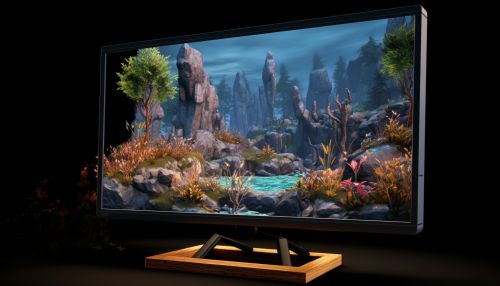Computer simulation
Introduction
Computer simulation is a discipline within computer science that uses models to replicate and study the behavior of complex systems. It is a digital construct that uses algorithms and equations to predict and understand the behavior of a system over time. This technique is widely used in various fields such as physics, engineering, biology, economics, and social sciences.


Overview
Computer simulations are used to understand and predict the behavior of systems that are difficult to observe in reality. These systems can be either too large, such as the universe, or too small, like atomic structures. They can also be used to simulate systems that are too dangerous or costly to experiment with directly, such as nuclear reactions or global climate models.
Types of Computer Simulations
There are several types of computer simulations, each with its own set of characteristics and uses. The most common types are deterministic, stochastic, continuous, and discrete simulations.
Deterministic Simulations
Deterministic simulations are those where the outcome is fully determined by the initial conditions and the rules of the simulation. These simulations are often used in fields such as physics and engineering, where the systems being modeled are governed by well-understood laws.
Stochastic Simulations
Stochastic simulations, on the other hand, incorporate elements of randomness. They are often used in fields such as biology and economics, where the systems being modeled are influenced by random events or have inherent uncertainty.
Continuous Simulations
Continuous simulations model systems that change continuously over time. These simulations often use differential equations to represent the changes in the system over time. Examples of continuous simulations include weather forecasting and fluid dynamics simulations.
Discrete Simulations
Discrete simulations model systems that change at distinct points in time. These simulations often use difference equations or state machines to represent the changes in the system. Examples of discrete simulations include traffic flow simulations and population growth models.
Methodology
The process of creating a computer simulation involves several steps, including model formulation, data collection, model implementation, verification, validation, and analysis of results.
Model Formulation
The first step in creating a computer simulation is to formulate a model of the system. This involves defining the system's components, the relationships between them, and the rules that govern their behavior. This step often involves a significant amount of theoretical work and may require expertise in the field being modeled.
Data Collection
Once the model has been formulated, data must be collected to parameterize the model. This data can come from a variety of sources, including experimental data, historical data, or expert opinion.
Model Implementation
After the data has been collected, the model is implemented in a computer program. This program uses the model and the data to simulate the behavior of the system over time.
Verification and Validation
After the model has been implemented, it must be verified and validated. Verification involves checking that the program correctly implements the model, while validation involves checking that the model accurately represents the real-world system.
Analysis of Results
Finally, the results of the simulation are analyzed to draw conclusions about the system. This analysis can involve statistical techniques, visualization tools, and other methods to understand the behavior of the system.
Applications
Computer simulations are used in a wide variety of fields to study complex systems. Some of the most common applications include:
Physics
In physics, computer simulations are used to study systems that are too large, too small, or too complex to study experimentally. Examples include simulations of the universe, atomic structures, and quantum systems.
Engineering
In engineering, computer simulations are used to design and optimize systems. Examples include simulations of bridges, aircraft, and electrical circuits.
Biology
In biology, computer simulations are used to study complex biological systems. Examples include simulations of ecosystems, cell behavior, and genetic processes.
Economics
In economics, computer simulations are used to study economic systems and to predict the effects of economic policies. Examples include simulations of markets, economies, and financial systems.
Limitations
While computer simulations are a powerful tool for understanding complex systems, they also have limitations. These include the accuracy of the model, the quality of the data, the complexity of the system, and the computational resources required.
Accuracy of the Model
The accuracy of a computer simulation depends on the accuracy of the model it is based on. If the model does not accurately represent the real-world system, the simulation will not produce accurate results.
Quality of the Data
The quality of the data used to parameterize the model can also affect the accuracy of the simulation. If the data is inaccurate or incomplete, the simulation may not accurately represent the real-world system.
Complexity of the System
The complexity of the system being modeled can also limit the usefulness of a computer simulation. If the system is too complex, it may be difficult to formulate a model that accurately represents it.
Computational Resources
Finally, the computational resources required to run a simulation can be a limitation. Large, complex simulations can require significant computational resources, which may not be available.
Future Directions
The field of computer simulation is constantly evolving, with new techniques and technologies being developed all the time. Some of the most promising future directions include the use of artificial intelligence in simulations, the development of more accurate models, and the use of high-performance computing to run larger and more complex simulations.
See Also
Artificial Intelligence High-Performance Computing Modeling and Simulation
